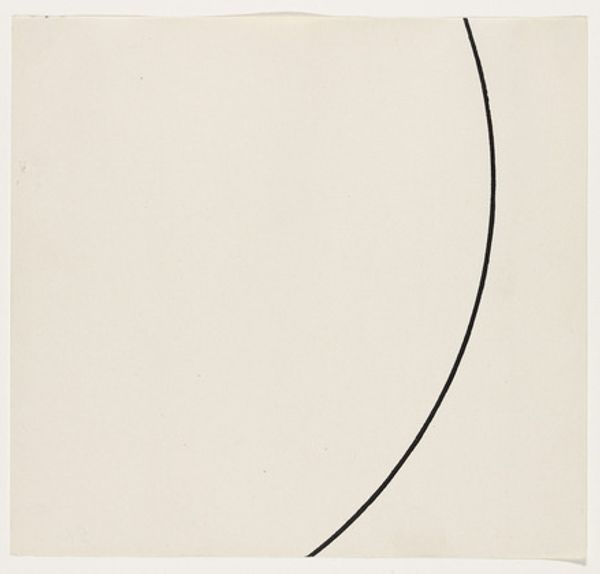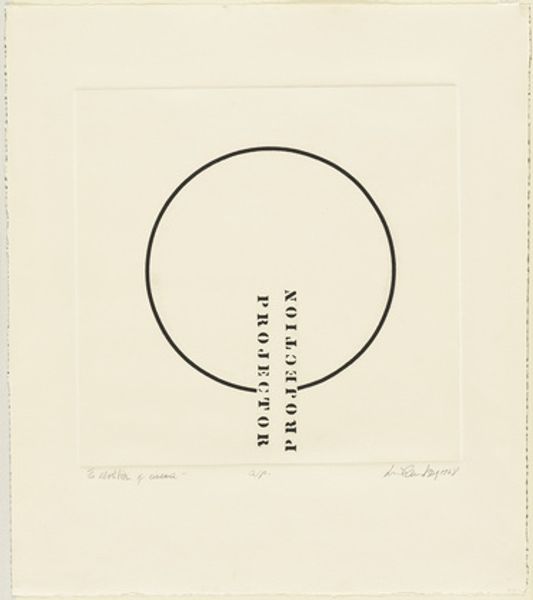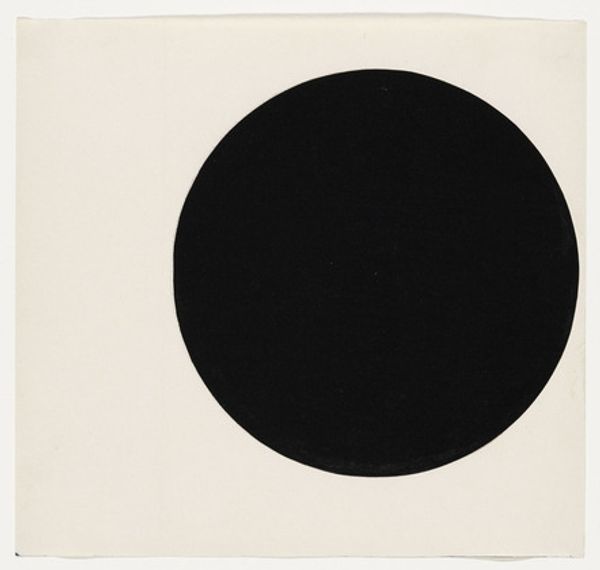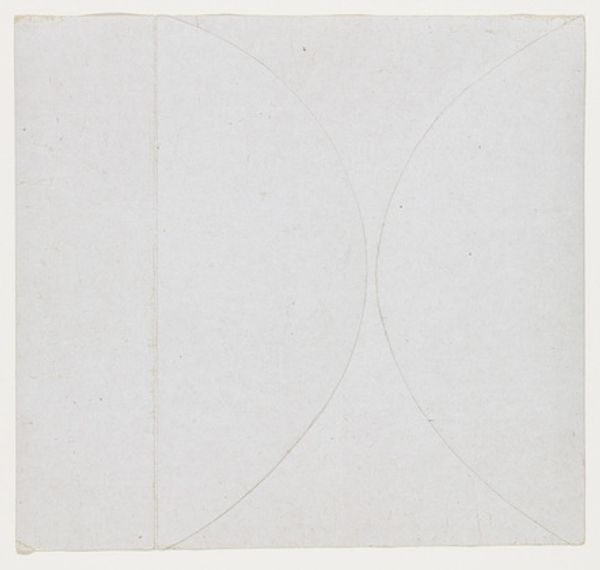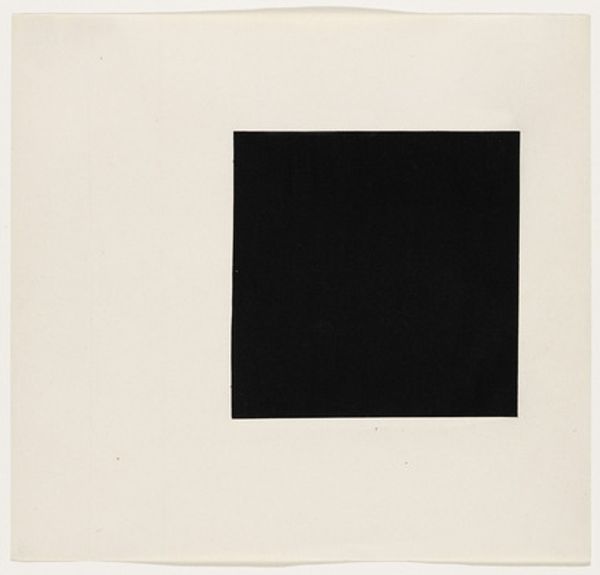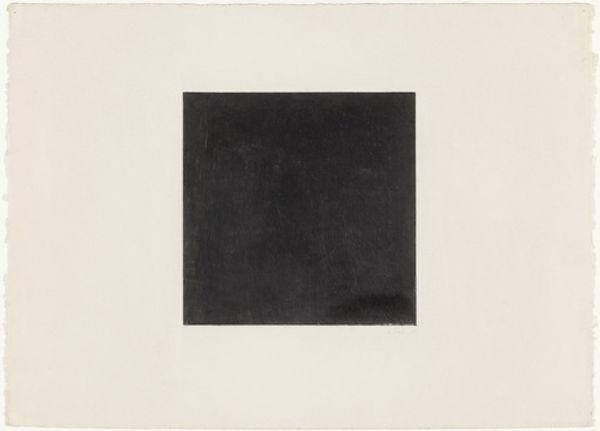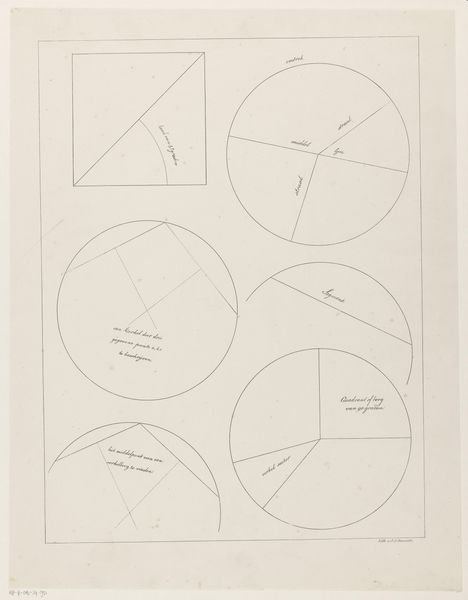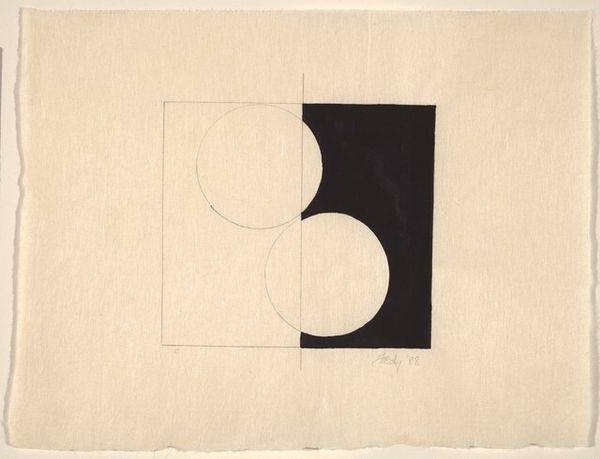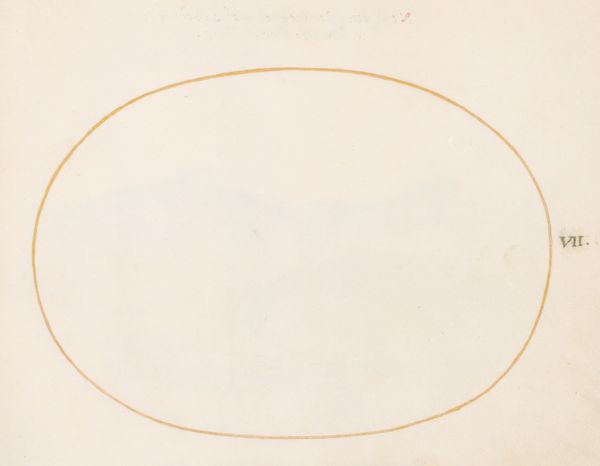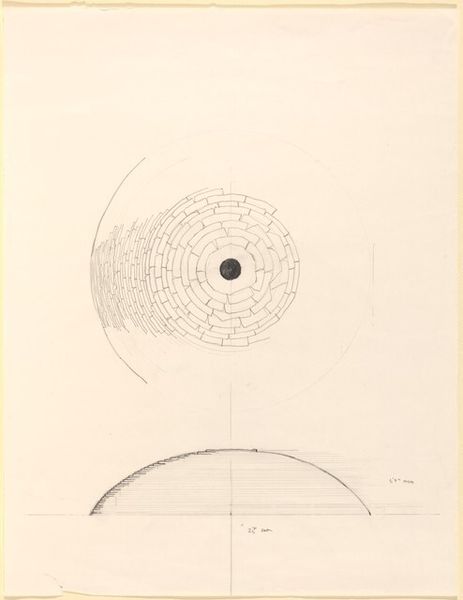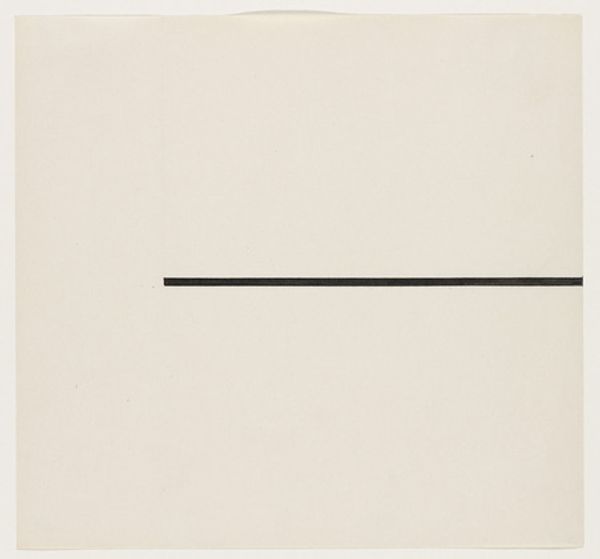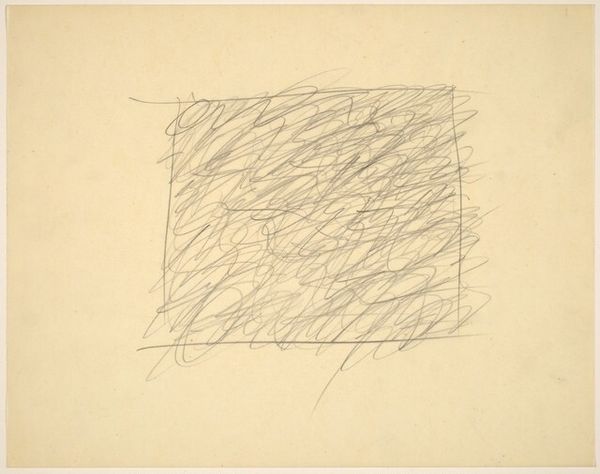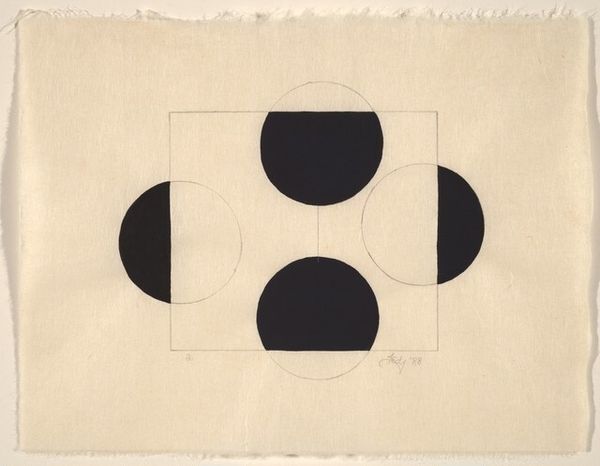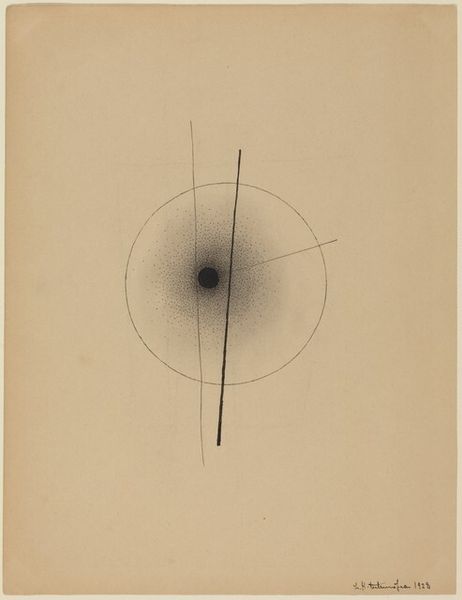
# print
#
circle
#
geometric
#
geometric-abstraction
#
abstraction
#
line
#
modernism
#
hard-edge-painting
#
monochrome
Copyright: (c) Ellsworth Kelly, all rights reserved
Curator: Let’s discuss Ellsworth Kelly’s “Circle Line,” a print made in 1951. At first glance, what comes to mind? Editor: It’s incredibly serene. Just this delicate black line forming a near-perfect circle on a pale, almost ghostly white ground. It feels… meditative, you know? A minimalist poem about form. Curator: Indeed. This piece reflects Kelly's exploration of pure form, moving away from representational art after his time in Paris. There is no symbolic goal in particular. The image isn’t alluding to other things, rather trying to become its own essence. He was deeply influenced by modernism and later became an important figure in hard-edge painting, this piece shows a fascination with line, shape, and their spatial relationships. We might consider its relationship to postwar abstraction. Editor: And the subtle imperfection is strangely captivating! The line isn’t mechanically perfect, there's this wobble that makes it feel… human, or maybe simply alive. Does that slight off-centeredness bring a touch of rebellion? I’m trying to relate with it. Maybe because it doesn’t want to confine, this resonates in the present days more than ever, what do you think? Curator: It brings forward crucial discussions around perfection and imperfection as social constructions, and the very ideas of hard-edge aesthetics against organic reality. This resonates profoundly today, as society still navigates constructed expectations versus embracing natural or imperfect forms. It challenges conventional beauty standards in relation to feminism as a socio-political response to cultural hegemony, especially after two World Wars when standardization and objectivity shaped thought and creation. Editor: You're right, and thinking about it in that frame helps me better to visualize Kelly at the time it was made and the need for challenging a status quo after a moment of human extinction attempts. Even in its starkness, "Circle Line" invites introspection. It's a reminder that simplicity can hold profound meaning. Curator: Precisely. It reminds us how minimal form might challenge rigid social norms of his time—echoing even now, by offering resistance in artistic and sociopolitical contexts.
Comments
No comments
Be the first to comment and join the conversation on the ultimate creative platform.
